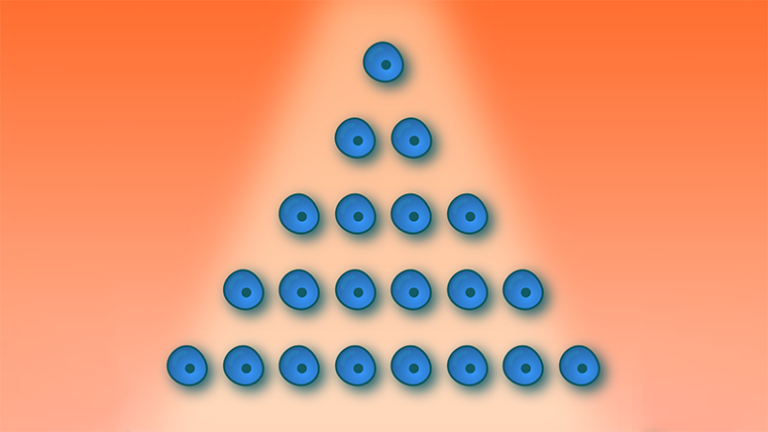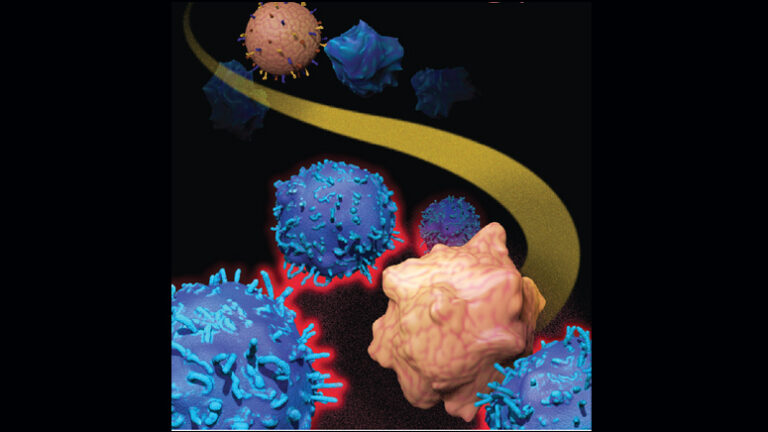News

23 May 2023
A niche for cancer
Stowers scientists are unraveling the mechanisms governing cancer stem cells
Read Article

Stowers Investigator and co-leader of the Cancer Biology Research Program at the University of Kansas Cancer Center Linheng Li, Ph.D., studies stem cell populations within the intestinal and hematopoietic (blood forming) systems. His research is paving the way for novel cancer therapies including targeting cancer stem cells and expanding hematopoietic adult stem cells from umbilical cord blood as an alternative to bone marrow transplants.
While cancer comprises hundreds of different diseases, all cancers can be characterized by disruptions in cellular function. Understanding what happens when a normal cell becomes cancerous is essential to developing treatments and cures. At the Stowers Institute, our foundational research identifies the genes, proteins, molecular networks, and mechanisms that underlie cell growth and other cell functions often compromised in cancer.
Our researchers are looking at how disruptions in these processes are associated with many different types of cancer such as leukemia and colon cancer.
Stowers scientists have identified ways to expand human umbilical cord stem cells in culture enabling a path forward for generating therapeutic quantities for transplants to treat leukemia and other cancers.
Other research areas include investigating cancer stem cells which are stubbornly resistant to treatment and developing new approaches for overcoming drug resistance and for stimulating the immune system.
Cancer is a leading cause of death worldwide, ranking second only to heart disease in the United States. Most people in the country have been touched by cancer or know someone who has. In fact, the Stowers Institute for Medical Research was conceived and established after personal experiences with the disease impassioned our founders, Jim and Virginia Stowers.
Scientists at the Institute are actively unraveling biology of the body at the most fundamental level to understand our genetic code, what happens when things go awry, and to one day transform treatment and detection of cancer.
The human body is composed of trillions of cells, each responsible for regulating their respective life cycles. Mutations within genes—or the non-coding sequences that regulate them—accountable for growth, division, and programmed cell death can cause normal cells to ignore their regulatory rules and begin dividing rapidly and uncontrollably.
Cancer can start nearly anywhere. These renegade cells propagate in number and can form tumors, invade surrounding areas, and spread through blood and lymphatic systems to colonize organs and tissues far from their origin.
No two cancers are genetically identical, but all cancers arise from changes or mutations in DNA that impact proper cell function. Cancer or an increased risk of developing cancer may be due to random errors during cell division, DNA damage from environmental or dietary factors, or inherited gene mutations (approximately 5%-10%). Pinpointing the precise mutation in DNA that results in cancer is not always possible which may complicate targeted treatment therapies.
Types of genes that may contribute to cancer or increased cancer risk include genes involved in cell growth (proto-oncogenes), genes that regulate cell division (tumor suppressors), and those that repair damaged DNA. Both proto-oncogenes and tumor suppressor genes are well categorized subtypes that govern normal cell growth, division, and apoptosis (programmed cell death), yet when they are mutated, they can lead to uncensored cell division. The best studied tumor suppressor and DNA repair gene, p53, when mutated can cause cells to become cancerous.
Cancer is categorized by which type of cell or system it originates in. According to the National Cancer Institute, carcinomas, the most common types of cancer, begin in cells lining the inside and outside surfaces of organs and include breast, colon, stomach, lung, bladder, and kidney cancer. Sarcomas form in bone and tissues like muscle, fat, and tendons. Leukemia originates in bone marrow and results in the proliferation of abnormal white blood cells. There are many other classes including lymphoma, myeloma, melanoma, and cancers of the brain and spine.
Early detection is likely the best indicator of a positive prognosis or cure. However, with hundreds of different cancers, their classification based on which body system is impacted may make certain types more aggressive or difficult to detect or treat.
Different types of cancer frequently require different treatment regimens, with a combination-based approach being most common. Sometimes a specific treatment type may be effective on multiple cancers due to shared genetic commonalities, while specialized treatments are necessary to target uncommon cancers.
Treatment and prevention can be correlated for the small percentage of heritable cancers. For example, treatment for women carrying a BRCA gene (implicated in breast and ovarian cancer) may include frequent screening or prophylactic surgery.
The World Health Organization estimates that nearly half of all cancers can be prevented. Cigarette smoking, proven beyond doubt by a wealth of data, is the leading cause of lung cancer. Additional methods to remediate the likelihood of developing cancer include maintaining a healthy diet and weight, liberal application of sunscreen to prevent skin cancer, exercising regularly, and limiting or avoiding consuming alcohol and other substances.
While a cancer-free world may be decades in the future, research has led to a better understanding of the disease and more effective treatments for many individuals. Several scientists at the Stowers Institute are engaged in increasing our understanding of how our genome, genes, and proteins are regulated for normal cellular function to help explain how these regulatory mechanisms are disrupted in cancer. Learn more about the research related to cancer in each of our labs by watching the videos on this page.
Stowers Investigators Scott Hawley, Ph.D., and Jennifer Gerton, Ph.D., investigate chromosome segregation and genome integrity. Cancers are frequently associated with incorrect numbers of chromosomes or mutations in DNA that interrupt cell function. Associate Investigator Randal Halfmann, Ph.D., is studying how conformational changes in protein shape signal programmed cell death in abnormal cells that may otherwise lead to cancer.
Heather's Story
Heather Marshall's decades-long professional pursuit of studying mice became intertwined with her personal journey to conquer cancer. Read more here.
News

23 May 2023
Stowers scientists are unraveling the mechanisms governing cancer stem cells
Read Article
News

03 August 2018
Researchers from Stowers and collaborators have identified a way to expand blood-forming, adult stem cells from human umbilical cord blood (hUCB).
Read Article
News

20 April 2020
The study’s researchers found that low doses of the anthracycline antibiotic doxorubicin inhibit the interaction between two molecular pathways that work closely together to promote tumor growth and resistance to therapy. The targeted approach also clears the way for cancer-targeting immune cells to do their work, an unexpected and novel finding, according to the study authors.
Read Article
